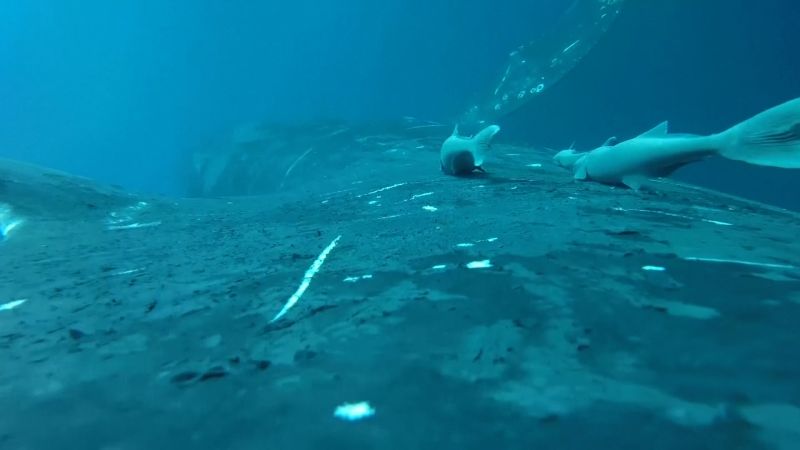Scientists investigating humpback whale behavior off the coast of Australia have captured extraordinary footage of remora fish, also known as sucker fish, engaging in a unique activity dubbed whale-surfing. This rare visual documentation reveals how these fish detach from their massive hosts just before the whales breach the surface, showcasing remarkable timing and agility.
The footage was obtained by marine scientist Olaf Meynecke from the Whales and Climate Research Program at Griffith University. Meynecke had equipped humpback whales with suction-cup cameras during their annual migration from icy Antarctic waters to the warmer seas off Queensland. While aiming to observe whale behavior, he discovered that the video feeds often included groups of up to 50 remoras, which appeared to be riding the whales during their journey.
Meynecke noted, “Whenever the whale was breaching and doing particularly fast movements, it appears that the sucker fish were responding very quickly to the movements. They knew exactly when to let go of the body of the whale before it was breaching the surface of the water and then returned to the same spot only seconds later.” This precision suggests that the remoras possess a keen instinct for timing, which allows them to effectively navigate their dynamic environment.
Remoras, which thrive on a diet of dead skin and parasites found on their larger hosts, maintain a mutually beneficial relationship with whales. Weighing in at an impressive 40 metric tons (44 U.S. tons), humpback whales provide these fish with a mobile platform to travel vast distances. However, Meynecke’s observations hint at a potential downside for the whales. He remarked, “We’ve had individuals with high numbers of these remoras, and they were continually breaching… It appeared that they’re trying to just get rid of some of these remoras.”
The migratory path known as Australia’s humpback highway sees approximately 40,000 humpbacks traverse a distance of 10,000 kilometers (6,000 miles) each year. This route brings the whales close to Australia’s eastern coastline for several months. While the remoras are likely to detach at some point during this journey, their subsequent whereabouts remain unclear. Meynecke speculated, “I suspect that the majority would probably leave at some point, maybe in temperate waters, but then where do they go?”
In the absence of whales, sucker fish seek refuge by attaching themselves to other large marine creatures, such as manta rays and dolphins. They may even latch onto unsuspecting scuba divers, much to the annoyance of those exploring the ocean depths. Meynecke humorously noted, “They’re not easy to get rid of.”
The stunning footage of remoras surfing on humpback whales not only highlights the intricate relationships within marine ecosystems but also raises questions about the behavior and survival strategies of these hitchhiking fish. As researchers continue to study these interactions, a greater understanding of the dynamics between remoras and their hosts may emerge, revealing the complexities of life beneath the waves.






































































